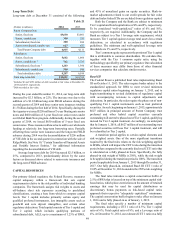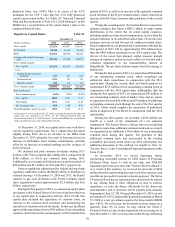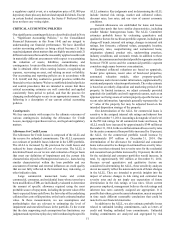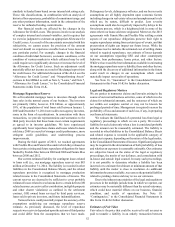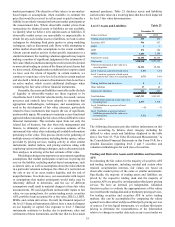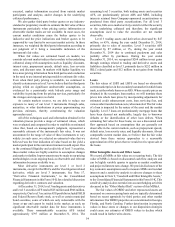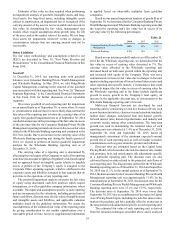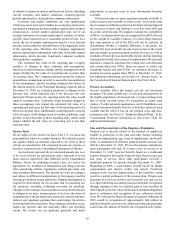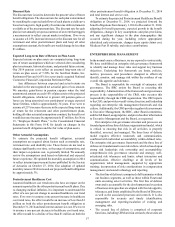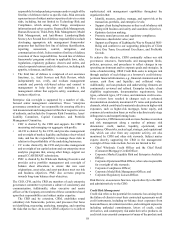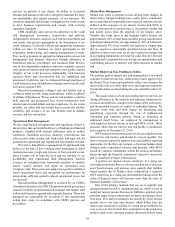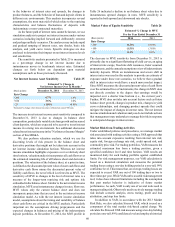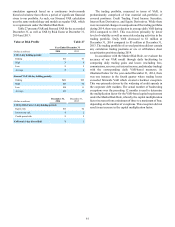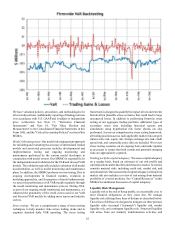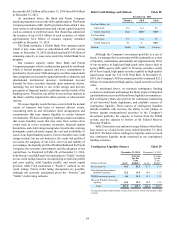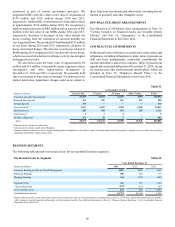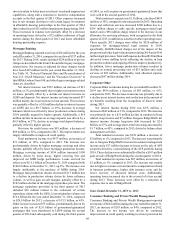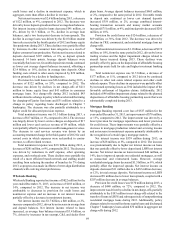SunTrust 2014 Annual Report Download - page 82
Download and view the complete annual report
Please find page 82 of the 2014 SunTrust annual report below. You can navigate through the pages in the report by either clicking on the pages listed below, or by using the keyword search tool below to find specific information within the annual report.59
services we provide to our clients, the ability to accurately
measure and manage credit risk is integral to maintain the long-
run profitability and capital adequacy of our business. We
commit to maintain and enhance a comprehensive credit system
to meet business requirements and comply with evolving
regulatory standards.
CRM establishes and oversees the adherence to the credit
risk management governance frameworks and policies,
independently measures, analyzes, and reports on portfolio and
risk trends, and actively participates in the formulation of our
credit strategies. Credit risk officers and supporting teammates
within our lines of business are direct participants in the
origination, underwriting, and ongoing management of credit.
They work to promote an appropriate balance between our risk
management and business objectives through adherence to
established policies, procedures, and standards. Risk Review,
one of our independent assurance functions, regularly assesses
and reports on business unit and enterprise asset quality, and the
integrity of our credit processes. Additionally, total borrower
exposure limits and concentration risk are established and
monitored. Credit risk may be mitigated through purchase of
credit loss protection via third party insurance and/or use of credit
derivatives such as CDS.
Borrower/counterparty (obligor) risk and facility risk is
evaluated using our risk rating methodology, which is utilized
in all lines of businesses. We use various risk models to estimate
both expected and unexpected loss, which incorporates both
internal and external default and loss experience. To the extent
possible, we collect and use internal data to ensure the validity,
reliability, and accuracy of our risk models used in default,
severity, and loss estimation.
Operational Risk Management
We face ongoing and emerging risks and regulations related to
the activities that surround the delivery of banking and financial
products. Coupled with external influences such as market
conditions, fraudulent activities, disasters, cyber-attacks and
other security risks, country risk, vendor risk, and legal risk, the
potential for operational and reputational loss remains elevated.
We believe that effective management of operational risk,
defined as the risk of loss resulting from inadequate or failed
internal processes, people and systems, or from external events,
plays a major role in both the level and the stability of our
profitability. Our Operational Risk Management function
oversees an enterprise-wide framework intended to identify,
assess, control, monitor, and report on operational risks
Company-wide. These processes support our goals to minimize
future operational losses and strengthen our performance by
maintaining sufficient capital to absorb operational losses that
are incurred.
Operational Risk Management is overseen by our CORO,
who reports directly to the CRO. The operational risk governance
structure includes an operational risk manager and support staff
within each business segment and corporate function. These risk
managers are responsible for execution of risk management
within their areas in compliance with CRM's policies and
procedures.
Market Risk Management
Market risk refers to potential losses arising from changes in
interest rates, foreign exchange rates, equity prices, commodity
prices, and other relevant market rates or prices. Interest rate risk,
defined as the exposure of net interest income and MVE to
adverse movements in interest rates, is our primary market risk
and mainly arises from the structure of our balance sheet.
Variable rate loans, prior to any hedging related actions, are
approximately 62% of total loans and after giving consideration
to hedging related actions, are approximately 46% of total loans.
Approximately 4% of our variable rate loans have coupon rates
that are equal to a contractually specified interest rate floor. In
addition to interest rate risk, we are also exposed to market risk
in our trading instruments carried at fair value. Our ALCO meets
regularly and is responsible for reviewing our open positions and
establishing policies to monitor and limit exposure to market
risk.
Market Risk from Non-Trading Activities
The primary goal of interest rate risk management is to control
exposure to interest rate risk, within policy limits approved by
the Board. These limits and guidelines reflect our tolerance for
interest rate risk over both short-term and long-term horizons.
No limit breaches occurred during the year ended December 31,
2014.
The major sources of our non-trading interest rate risk are
timing differences in the maturity and repricing characteristics
of assets and liabilities, changes in the shape of the yield curve,
and the potential exercise of explicit or embedded options. We
measure these risks and their impact by identifying and
quantifying exposures through the use of sophisticated
simulation and valuation models, which, as described in
additional detail below, are employed by management to
understand net interest income at risk and MVE at risk. These
measures show that our interest rate risk profile is moderately
asset sensitive at December 31, 2014.
MVE and net interest income sensitivity are complementary
interest rate risk metrics and should be viewed together. Net
interest income sensitivity captures asset and liability repricing
mismatches for the first year, inclusive of forecast balance sheet
changes, and is considered a shorter term measure, while MVE
sensitivity captures mismatches within the period end balance
sheets through the financial instruments' respective maturities
and is considered a longer term measure.
A positive net interest income sensitivity in a rising rate
environment indicates that over the forecast horizon of one year,
asset based income will increase more quickly than liability
based expense due to balance sheet composition. A negative
MVE sensitivity in a rising rate environment indicates that the
value of financial assets will decrease more than the value of
financial liabilities will increase.
One of the primary methods that we use to quantify and
manage interest rate risk is simulation analysis, which we use to
model net interest income from assets, liabilities, and derivative
positions under various interest rate scenarios and balance sheet
structures. This analysis measures the sensitivity of net interest
income over a two year time horizon, which differs from the
interest rate sensitivities in Table 25, which are prescribed to be
over a one year time horizon. Key assumptions in the simulation
analysis (and in the valuation analysis discussed below) relate


